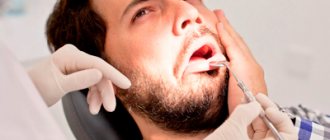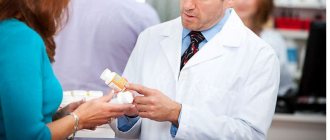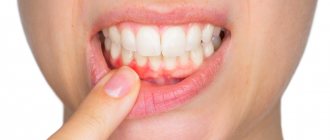Scientists claim that bacteria have existed on Earth for at least 3.8 x 109 years, while antibiotics have been used in clinical practice only since the 40s of the last century [1]. But even this time was enough for the drugs of this group to become overgrown with many myths that interfere with effective antibiotic therapy. Despite the fact that treatment with antimicrobial agents is a priori impossible without the direct guidance of a doctor, the modern “intelligent patient,” influenced by pseudo-scientific data, makes an “invaluable contribution” to the cause of antibiotic resistance and other negative consequences of incorrect use of antibiotics. A competent pharmaceutical specialist who has correct information about antimicrobial agents and is ready to share it with the client can warn him against rash decisions.
Myth. Modern antibiotics are so “strong” that not a single bacteria can resist them.
Is it true.
In fact, one of the most pressing problems of modern pharmacology and healthcare in general is the rapid development of resistant strains of bacteria, which are also resistant to modern antibiotics of the latest generations. The emergence of resistance has been registered for each class of antimicrobial drugs without exception. It can develop at any stage of achieving a therapeutic effect (and even several at once). The main mechanisms for the development of resistance [1, 2]:
- Initially resistant strains. For example, some gram-negative bacteria have outer cell membranes that protect their cells from the action of a number of penicillins and cephalosporins.
- Spontaneous mutations leading to the emergence of organisms resistant to antibiotics.
- The transmission of antimicrobial resistance genes is the most common and important mechanism for the development of antibiotic resistance.
Antibiotic resistance is a global problem that can have unpredictable consequences for each of us. Alas, consumers themselves make a huge contribution to its existence. It is appropriate to remind customers of this with prescriptions for antibiotics, emphasizing that the risk of developing resistant strains can be significantly reduced by taking antimicrobial drugs only as prescribed by a doctor and strictly observing the dose and regimen of antibiotic therapy.
Myth. To recover faster, you need “strong” broad-spectrum antibiotics
Is it true.
All registered antibacterial drugs can be safely classified as powerful, that is, “strong”, however, the severity of their antimicrobial effect depends on many factors united by the principles of antibiotic therapy [2]:
- Establishing a diagnosis as accurate as possible. Knowledge of the diagnosis allows you to determine the suspected pathogen.
- Identification of the pathogen, if possible.
- Making an informed decision about the need to prescribe antibiotics.
- Selection of the optimal antibiotic, taking into account pharmacokinetics and spectrum of activity.
- Selection of the optimal dose and course of treatment (the latter for most acute infections should be at least 5–10 days).
- Monitoring the effectiveness of antibiotic therapy.
In Russian realities, when control over the use of antibiotics is, frankly speaking, insufficient, the issue of incorrect selection of drugs is especially acute. It is known that it is carried out in two ways: etiotropic and empirical. In the first case, the antibiotic is used specifically against a specific, precisely identified pathogen. Without a doubt, this is rational and justified. However, identifying the microorganism that caused the infection takes time, usually taking several days. When the process is acute and the patient requires immediate help, isolating the pathogen is an unjustified luxury. In such a situation, empirical therapy is prescribed, selecting the drug taking into account the most likely pathogens [3]. For example, the most common causative agent of pneumonia is pneumococcus, cystitis is E. coli, and so on.
If the antibiotic was selected correctly and all other principles of antibiotic therapy were followed, it will undoubtedly turn out to be “strong”. But the same drug, used incorrectly (regardless of at what stage the mistake was made), may show “weakness” and not have a therapeutic effect.
When can you drink alcohol after taking antibiotics?
A person who does not suffer from chronic diseases and has not undergone radiation or chemical therapy within the last year can drink a small portion of alcohol one day after completing antibiotic therapy. Patients taking metronidazole should avoid drinking alcohol for 48 hours after the last tablet or injection. After tinidazole therapy, alcohol is prohibited for 72 hours. Patients who suffer from cirrhosis and hepatitis are advised to avoid alcoholic beverages for at least two weeks.
Important! Dietary supplements, natural medicines, sprays and mouth rinses may also contain ethanol. It is worth consulting with your doctor regarding the advisability of simultaneously taking antibiotics and using ethanol-containing drugs.
Myth. Oral cephalosporins are as “strong” as parenteral ones
Cephalosporins (CS) are one of the most extensive classes of antimicrobial drugs, available in both oral and parenteral forms. In this case, the severity of the antibacterial effect is primarily determined by belonging to one of the four generations. 1st generation cephalosporin antibiotics—parenteral cefazolin and oral cephalexin—have the narrowest spectrum of activity, similar to the spectrum of aminopenicillins (ampicillin, amoxicillin) [3]. Second generation cephalosporins (parenteral cefuroxime, oral cefaclor) are active against gram-negative bacteria, while their effect on staphylococci and streptococci is close to their predecessors. Thus, the power of representatives of the first and second generation antibiotics is practically independent of the dosage form. But with subsequent generations of cephalosporins, things are not so simple.
It is known that 3rd generation antibiotics have higher activity against gram-negative bacteria, pneumococci and streptococci compared to CS-I and CS-II. However, their oral forms cefixime and ceftibuten clearly have a narrower spectrum of activity than parenteral ceftriaxone, ceftazidime and cefoperazone. In particular, oral drugs do not act against penicillin-resistant pneumococci, which is associated with their relatively low bioavailability. Thus, the bioavailability of cefixime is only 40–50%, while for parenteral forms it approaches 100% [3].
However, cefixime is considered a powerful antibiotic, the use of which is justified for urinary tract infections, as well as otitis media and pharyngitis. Ceftibuten is used much less frequently: it is indicated only for the treatment of acute bacterial complications of chronic bronchitis, otitis media, pharyngitis and tonsillitis. A significant drawback of this drug is its low activity against Staphylococcus aureus [4]. At the same time, third-generation parenteral cephalosporins are widely used to treat severe infections of the upper and lower respiratory tract, biliary tract, soft tissues, intestinal infections, sepsis and others [3].
Myth. Chloramphenicol is a “strong” safe antibiotic for intestinal infections
Is it true.
On the one hand, chloramphenicol really has a wide spectrum of activity, including gram-positive and gram-negative cocci, gram-negative bacilli, including coliform and hemophilus influenzae, as well as other pathogens of intestinal infections - salmonella, shigella, and so on. But, on the other hand, the drug is associated with an equally wide range of adverse reactions.
Chloramphenicol is known to inhibit hematopoiesis, causing thrombocytopenia, anemia, and even fatal aplastic anemia (albeit in only 1 case in 10,000–40,000 patients) [3]. In addition, it has hepatotoxic, neurotoxic and other side effects. Due to its extremely unfavorable safety profile, chloramphenicol is considered a reserve antibiotic and is prescribed only in cases where the benefit of its use outweighs the risk of side effects. This usually happens if for some reason it is not possible to select another antibacterial drug [3, 5].
Is it possible to drink alcohol with antibiotics?
Almost all instructions for the use of antibacterial drugs contain a note regarding the prohibition of drinking alcohol during treatment. However, actual side effects are rarely reported. Excessive consumption of alcoholic beverages leads to a decrease in the protective functions of the immune system. The patient's body stops fighting infections. Even “approved” antibiotics become ineffective.
Excessive alcohol consumption can also impair the absorption of antibacterial drugs taken orally. During the metabolism of ethyl alcohol, acetaldehyde is produced. The component causes nausea and headaches (popularly called a “hangover”). People who take antibiotics in tablet form also experience digestive side effects. Drinking alcohol during antibiotic therapy can lead to exacerbation of peptic ulcer disease and a general deterioration in concentration and coordination.
Myth. Tetracyclines are traditionally “weak” antibiotics, much less powerful than penicillins
Is it true.
In fact, tetracyclines have a wide range of antibacterial activity, and their modern representatives act against an even larger number of bacteria than their predecessors, including a number of pathogens that are resistant to other classes of antibiotics. Thus, tigecycline, which appeared on the market only in the mid-2000s, was developed as part of a program to combat the growing antibiotic resistance of such “complex” pathogens as Staphylococcus aureus and Escherichia coli [6].
Tetracyclines, including tetracycline and doxycycline, which have been used for decades, are able to penetrate into cells, which is why they are still widely used today to treat intracellular sexually transmitted infections (chlamydia, ureaplasmosis, mycoplasmosis). Indications for their use also include Helicobacter pylori infection - as part of eradication therapy. Due to its effectiveness against Propionibacterium acne
tetracyclines, along with macrolides, are used to treat acne.
Minocycline, whose spectrum includes Neisseria meningitidis
, is used to prevent meningococcal infection [2].
As a fly in the ointment, it should be mentioned that most tetracyclines (with the exception of modern representatives) are characterized by a high level of secondary resistance of many bacteria and, in addition, cross-resistance of microorganisms [3]. And this, undoubtedly, in many cases reduces their relevance.
Consequences of taking antibiotics and alcohol at the same time
In most cases, alcohol does not affect the effectiveness of antibiotics. However, some combinations may cause unpleasant side effects. Ethyl alcohol is broken down in the liver by special enzymes. Some antibacterial drugs are metabolized by similar enzymes. The liver of people who drink alcohol too often cannot metabolize antibiotics. At best, the drug becomes ineffective, at worst, the liver cells are destroyed.
Disulfiram-like reaction is one of the most common side effects of simultaneous use of alcohol and antibiotics. The patient complains of the following complications:
- nausea and vomiting;
- skin redness;
- stomach cramps;
- colic;
- headache;
- cardiopalmus;
- labored breathing;
- tremor.
Symptoms of the antabuse effect (the second name of the pathology) occur within 15-30 minutes after ethanol and medications enter the body. The intensity of the pain increases over several hours and reaches its peak after 8-12 hours. The danger of a disulfiram-like reaction is that unpleasant symptoms can occur even 1.5-2 weeks after quitting alcohol. The antabuse effect can be fatal. It is extremely important to seek professional medical help when the first symptoms develop. Even weak alcohol can cause complications.
Ethanol depresses the central nervous system. Medicines containing metronidazole also impair nerve conduction. The combination of the two components leads to:
- drowsiness;
- depression and confusion;
- dizziness;
- motor retardation.
The additive effect is especially dangerous for older people, drivers, and knowledge workers.
The consequences of mixing alcohol with antibacterial drugs directly depend on individual factors. For example, women experience side effects much more often than men. Due to metabolic rate disturbances, older people do not tolerate disulfiram-like reactions well and suffer from complications longer. Patients who take antidepressants, opioid painkillers, muscle relaxants, and anticonvulsants do not tolerate the simultaneous use of antibiotics and alcoholic beverages.










